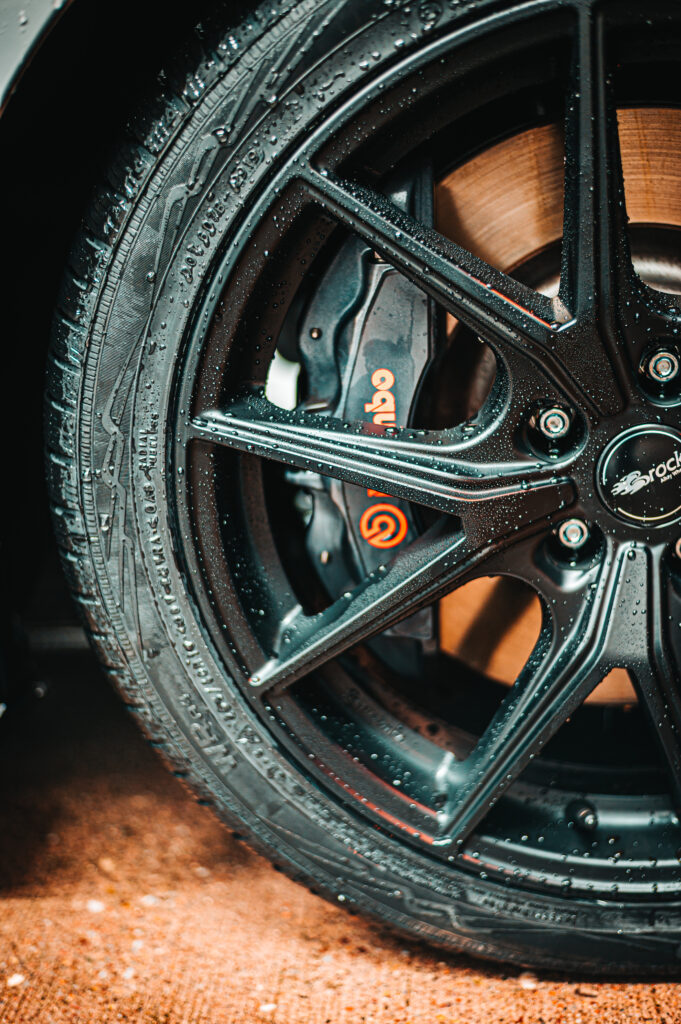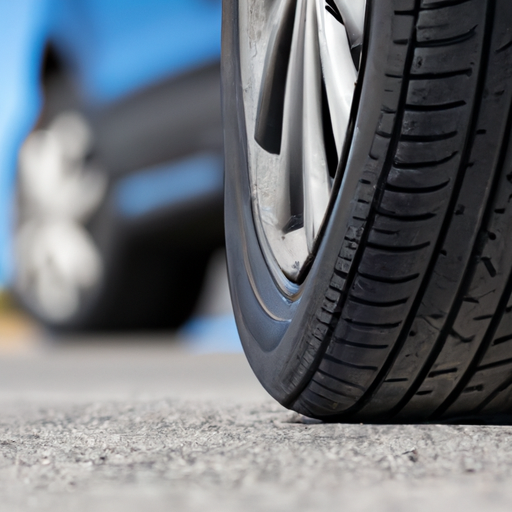Imagine driving down the road on a scorching summer day, when suddenly a dark cloud looms overhead and the temperature drops significantly. You start to wonder if your summer tires are equipped to handle these sudden temperature changes. Will they provide the same level of performance and safety in both extreme heat and unexpected dips in temperature? In this article, we will explore the capabilities of summer tires and how they fare when confronted with sudden shifts in temperature during the summer months.

Understanding Summer Tires
What are summer tires?
Summer tires, also known as performance tires, are specially designed to provide optimal performance in warm weather conditions. They are made using a unique rubber compound that is formulated to remain flexible and provide excellent grip in hot temperatures.
Characteristics of summer tires
Summer tires have several characteristics that set them apart from other types of tires. They typically have a shallower tread depth, which allows for more contact with the road surface, resulting in increased grip and traction. Additionally, the tread pattern of summer tires is designed to channel water away from the tire, reducing the risk of hydroplaning. Overall, summer tires offer improved handling, responsiveness, and braking performance in warm weather conditions.
Temperature Performance of Summer Tires
How summer tires perform in hot temperatures
Summer tires excel in hot temperatures due to their unique rubber compound. This compound is specifically formulated to remain flexible and provide excellent grip when the road surface heats up. This allows the tires to maintain their performance characteristics, such as responsiveness and traction, even in extreme heat.
How summer tires handle sudden temperature changes
While summer tires are designed for warm weather conditions, they may not perform optimally in sudden temperature changes. Rapid decreases in temperature can cause the rubber compound of summer tires to harden, resulting in reduced grip and traction. It is important to consider the potential impact of sudden temperature changes on summer tire performance and take appropriate measures to ensure safety on the road.
Advantages of Summer Tires
Enhanced grip and traction
One of the main advantages of summer tires is their enhanced grip and traction. The unique rubber compound and tread pattern of summer tires allow for increased contact with the road surface, improving traction and reducing the risk of slipping or skidding. This provides a safer and more enjoyable driving experience, especially in dry and warm weather conditions.
Improved braking performance
Summer tires are known for their superior braking performance. The shallower tread depth and specialized tread pattern of summer tires allow for quicker and more efficient braking, reducing the stopping distance and improving overall safety on the road. This increased braking performance is particularly beneficial during emergency situations or when driving at high speeds.
Better handling and responsiveness
Summer tires offer improved handling and responsiveness compared to other types of tires. This is due to their unique rubber compound and tread design, which provide a more direct and precise connection between the tires and the road. As a result, the driver has better control over the vehicle, allowing for more confident and enjoyable driving experiences.
Factors Affecting Summer Tire Performance
Tire composition and design
The composition and design of summer tires play a crucial role in their performance. The specialized rubber compound used in summer tires allows for optimal grip and traction in warm weather conditions. Additionally, the tread pattern of summer tires is designed to effectively channel water away from the tire to reduce the risk of hydroplaning.
Tire tread depth and pattern
The tread depth and pattern of summer tires are specifically designed to provide the best performance in warm weather conditions. The shallower tread depth allows for more contact with the road surface, maximizing grip and traction. The tread pattern is engineered to increase stability, responsiveness, and the overall handling capabilities of the tires.
Inflation pressure
Maintaining proper inflation pressure is essential for optimal summer tire performance. Underinflated tires can lead to increased rolling resistance, decreased fuel efficiency, and compromised handling. On the other hand, overinflated tires can result in reduced contact with the road surface, leading to decreased grip and traction. Regularly checking and maintaining the recommended tire pressure is important for ensuring the best performance and longevity of summer tires.
Driving habits and conditions
Driving habits and conditions also have a significant impact on the performance of summer tires. Aggressive driving, such as abrupt acceleration or braking, can cause increased wear and decreased tread life of the tires. Additionally, driving on rough or poorly maintained roads can accelerate tread wear and affect overall tire performance. Adapting driving habits to suit the capabilities of summer tires and avoiding harsh conditions can help maintain their performance and longevity.

Understanding Temperature Differences
How sudden temperature changes affect tire performance
Sudden temperature changes can have a notable impact on tire performance, including summer tires. When temperatures decrease rapidly, the rubber compound of summer tires can harden, reducing their flexibility and grip. This can result in decreased handling capabilities and traction, making it important to consider the potential effects of sudden temperature changes on summer tire performance.
The impact of temperature on tire pressure
Temperature changes can also affect tire pressure. As temperatures rise, the air inside the tire expands, causing an increase in tire pressure. Conversely, as temperatures drop, the air inside the tire contracts, resulting in a decrease in tire pressure. Monitoring and adjusting tire pressure accordingly is essential to maintain optimal tire performance and safety.
Impact of Sudden Temperature Changes on Summer Tires
Increased wear and tread deterioration
Sudden temperature changes can contribute to increased wear and tread deterioration in summer tires. When the rubber compound of the tires hardens due to a rapid decrease in temperature, it becomes more susceptible to wear. Hardened rubber is less flexible and may not conform to the road surface as effectively, leading to accelerated tire wear and potential tread damage.
Reduced traction and grip
The decreased flexibility of summer tires caused by sudden temperature changes can result in reduced traction and grip on the road. This can be particularly problematic during wet or icy conditions, where maintaining proper traction is crucial for safe driving. Drivers should exercise caution and adjust their driving style accordingly when encountering sudden temperature changes.
Changes in tire pressure
Sudden temperature changes can also cause fluctuations in tire pressure. As mentioned earlier, cold temperatures can lead to a decrease in tire pressure, while hot temperatures can cause an increase. It is important to regularly monitor tire pressure and make necessary adjustments to ensure optimal performance and safety, especially during periods of extreme temperature changes.

Tips for Managing Sudden Temperature Changes
Regularly monitor tire pressure
To manage sudden temperature changes effectively, it is crucial to regularly monitor tire pressure. This can be done using a tire pressure gauge to ensure that the tires are inflated to the recommended levels. By maintaining proper tire pressure, the performance and longevity of summer tires can be maximized, and potential safety risks can be minimized.
Consider seasonal tire changes
For areas with significant temperature fluctuations, it may be beneficial to consider seasonal tire changes. All-season tires or winter tires are designed to perform well in a variety of weather conditions, including cold temperatures, snow, and ice. By switching to appropriate tires for the season, drivers can ensure optimal safety and performance on the road.
Adapt driving style to changing conditions
Adapting driving style to changing conditions is essential for safe and efficient driving. When encountering sudden temperature changes, it is important to adjust driving habits accordingly. This may include reducing speed, increasing following distance, and avoiding sudden or harsh maneuvers. By driving responsibly, drivers can help maintain the performance and lifespan of summer tires.
Other Considerations for Summer Tire Maintenance
Regular tire inspections
Regular tire inspections are essential for maintaining optimal summer tire performance. Inspecting the tires for signs of wear, uneven tread wear, or damage can help identify any potential issues early on. Additionally, checking for proper tire inflation and ensuring that the tread depth is within the recommended limits are important aspects of tire maintenance.
Proper storage during off-season
During the off-season, proper storage of summer tires is crucial to maintain their performance and longevity. Tires should be stored in a cool, dry, and protected location to prevent damage from sunlight, moisture, or extreme temperatures. Additionally, tires should be stored in an upright position to maintain their shape and prevent any damage.
Rotating and replacing tires
Regularly rotating tires can help ensure even wear and prolong the lifespan of summer tires. This involves periodically switching the front and rear tires to distribute the wear more evenly. Additionally, when the tread depth reaches a certain limit, it is important to consider replacing the tires to maintain optimal performance and safety on the road.

Comparing Summer Tires with All-Season Tires
Differences in tire design and performance
Summer tires and all-season tires have different designs and performance characteristics. Summer tires are optimized for warm weather conditions, offering enhanced grip, traction, and performance. All-season tires, on the other hand, are designed to provide reliable performance in a wide range of weather conditions, including moderate cold temperatures and light snow. While all-season tires offer versatility, summer tires excel in warm weather conditions.
Handling temperature changes with all-season tires
All-season tires are engineered to handle temperature changes better than summer tires. Their tread compound is designed to remain flexible in a wider range of temperatures, allowing for better traction and grip in both warm and cold weather conditions. However, it is worth noting that all-season tires may not provide the same level of performance as summer tires in extremely hot temperatures.
Conclusion
Understanding summer tires and their performance in different temperature conditions is essential for responsible and safe driving. Summer tires offer enhanced grip, traction, braking performance, and handling, making them an excellent choice for warm weather conditions. However, sudden temperature changes can affect their performance, leading to increased wear, reduced traction, and changes in tire pressure. By monitoring tire pressure, considering seasonal tire changes, adapting driving style, and properly maintaining summer tires, drivers can ensure optimal performance, longevity, and safety on the road.


